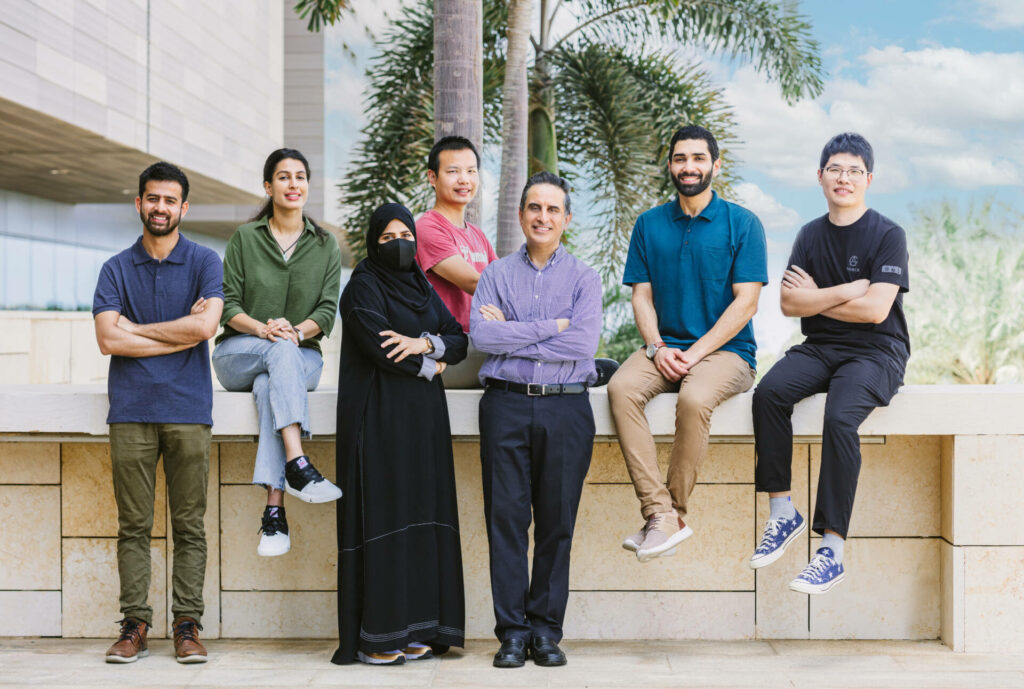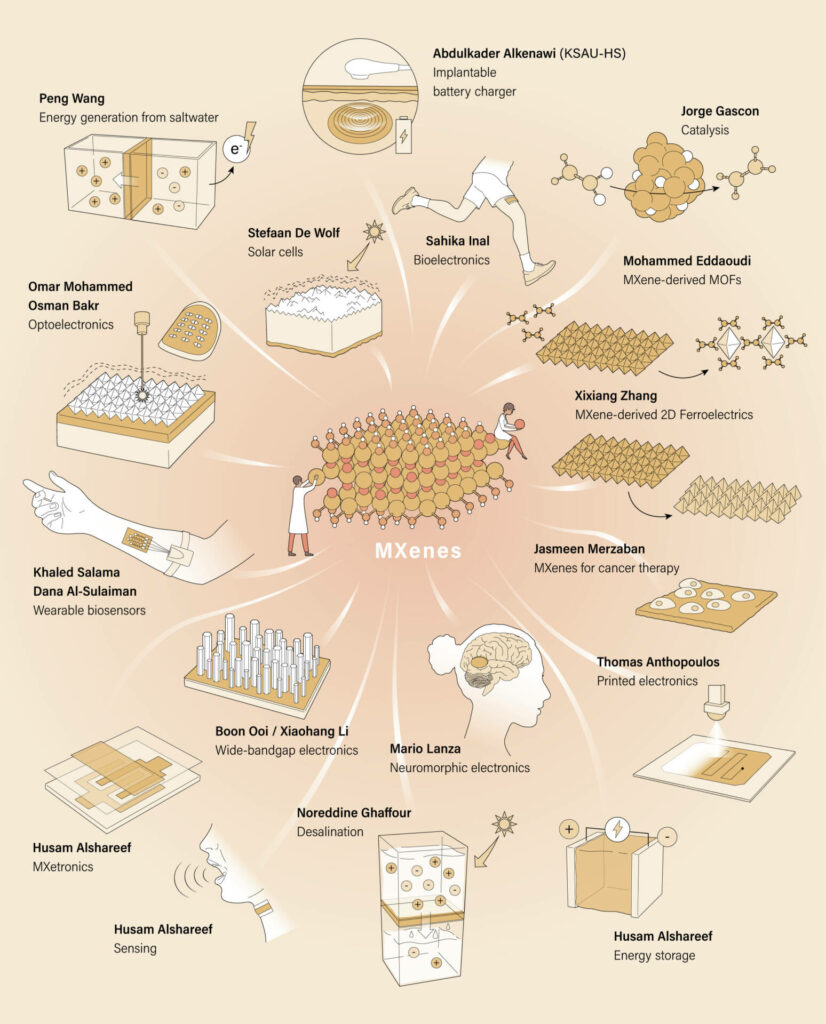Atomically thin MXenes boast a combination of electrical, optical and chemical properties that can be exploited for a large number of applications, says Husam Alshareef, a pioneer of MXene science and technology at KAUST.
A class of two-dimensional inorganic compounds, “MXenes are similar to graphene, except that we are able to manipulate their composition and surface chemistry over a wide range,” Alshareef says. To date, more than 30 MXenes have been experimentally synthesized, but hundreds more MXenes actually exist.
Alshareef, together with colleagues from KAUST and beyond, is putting MXene properties to the test. MXenes produced in the Alshareef lab are being assessed in devices ranging from solar cells to implantable batteries. Alshareef’s collaborative MXene research now extends to projects with 16 different professors within KAUST alone.
The technical achievements powered by the lab’s diverse range of collaborations are many and range from nanoelectronics to batteries, catalysis and biosensors. These snapshots of MXene collaborative research illustrate just some of the uses being explored for these exciting two-dimensional materials.

© 2022 KAUST; Anastasia Serin
Implantable batteries recharged by ultrasound
MXenes typically are formed of a titanium and carbon atom core sandwiched by a metal oxide or hydroxide. This conductive core and chemically active surface are key to many potential MXene applications, including batteries that are implantable and wirelessly rechargeable that could power pacemakers, medical sensors or implanted drug delivery devices.
In collaboration with Abdulkader Alkenawi, a physician at the King Saud bin Abdulaziz University for Health Sciences in Jeddah, Alshareef’s team is exploring MXenes-based biocompatible hydrogels.
When exposed to medical ultrasound, the interaction between the negatively charged outer MXene surface and positively charged protons in the hydrogel generates a current in the MXene that could be used to charge and power implanted electronic devices.
Saltwater energy harvester
MXene membranes could enable electricity generation simply by exploiting the salinity difference between two containers of water, shows research conducted in collaboration with Peng Wang at KAUST’s Environmental Nanotechnology Lab.
The team’s membrane consists of multiple MXene sheets. Nanoscopic channels between the sheets allow water and ions to flow. “If you place this membrane between two water tanks of different salinity, the MXenes’ negative surface charge will accelerate the movement of the cations between the tanks, which produces a current in an external circuit,” Alshareef says.
“The team won seed funding to develop a large-scale device that could use seawater to charge a battery overnight and is now seeking industrial collaborations.”
“The team won seed funding to develop a
large-scale device that could use seawater
to charge a battery overnight and is now seeking industry collaborations.”
Cutting the cost of solar
Silicon solar cells rely on indium tin oxide (ITO), an optically transparent and electrically conductive material, to generate an electronic current from sunlight. To boost ITO’s conductivity, a coating of silver is usually applied. “Silver is the best conductor we know, but it is expensive,” Alshareef says. “MXenes would be cheaper once they are scaled up.”
With Stefaan De Wolf from the KAUST Solar Center, the team developed a process to coat MXenes onto commercial 6-inch silicon solar cells. “We tested MXene and silver solar cells side by side and got exactly the same efficiency of 20 percent,” Alshareef says. The team is now working to repeat the feat with tandem silicon-perovskite solar cells.
Seeing the light
Photodetector materials, which convert incoming light into an electrical signal, are used in many sensing and imaging applications. MXenes have great potential for photodetector devices, suggests research by Alshareef and Omar Mohammed from KAUST’s Ultrafast Laser Spectroscopy and Four-dimensional Electron Imaging group.
“Conventional photodetectors use a semiconductor for light detection, but MXene photodetectors work a little differently,” Alshareef explains. “Light absorption in MXenes happens by exciting electron oscillations called surface plasmons,” he says. “Surface plasmons can excite electron-hole pairs in the material which are swept across the device and collected as photocurrent.”
A molybdenum based MXene proved particularly effective for photodetection, the team showed. “Some MXenes absorb in the IR, a wavelength of light that passes through the skin, so it may have biomedical imaging applications,” Alshareef says.

© 2022 KAUST; Antonio García. Source: Jehad El Demellawi

